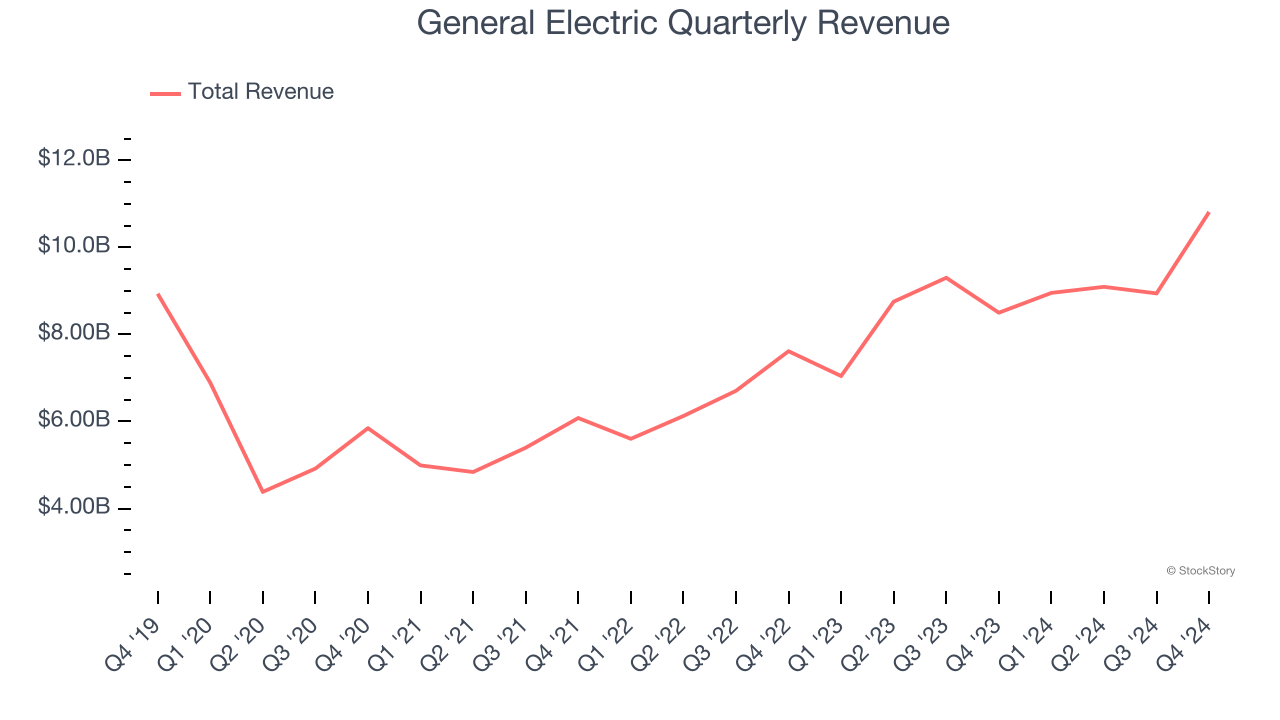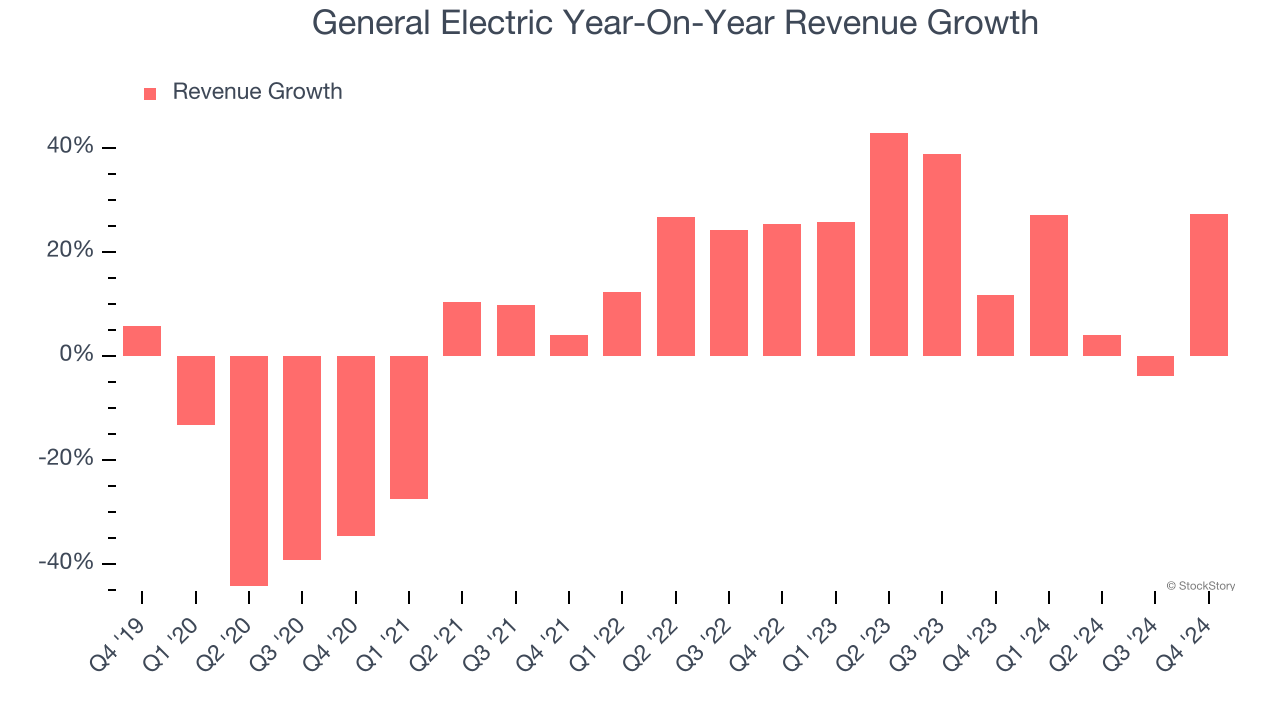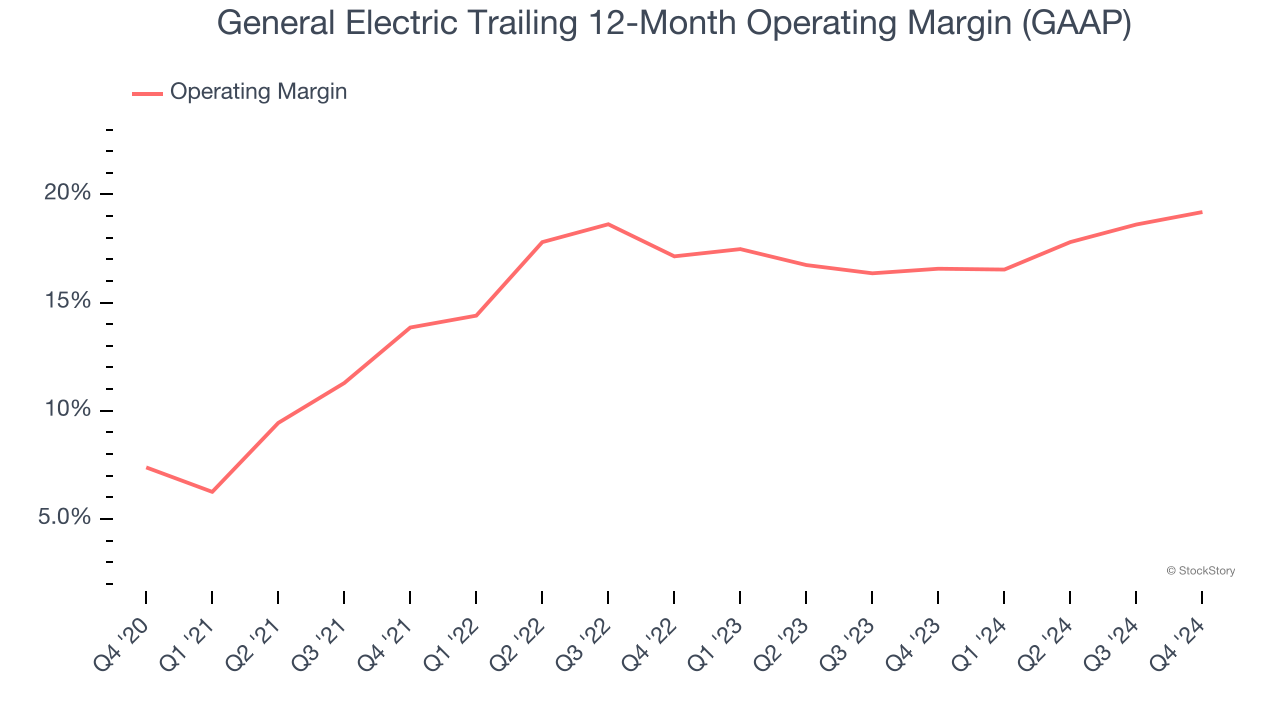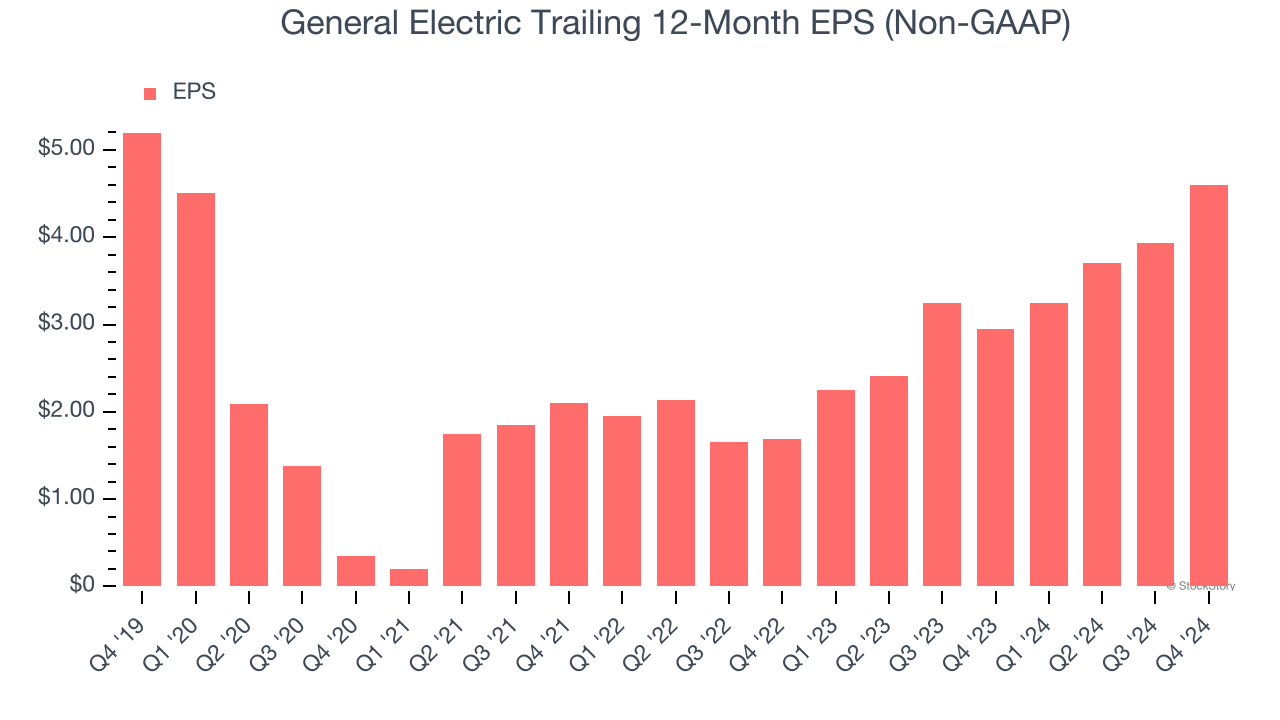
Industrial conglomerate General Electric (NYSE: GE) reported Q4 CY2024 results topping the market’s revenue expectations, with sales up 27.2% year on year to $10.81 billion. Its non-GAAP profit of $1.32 per share was 26.9% above analysts’ consensus estimates.
Is now the time to buy General Electric? Find out by accessing our full research report, it’s free.
General Electric (GE) Q4 CY2024 Highlights:
- Revenue: $10.81 billion vs analyst estimates of $9.47 billion (27.2% year-on-year growth, 14.2% beat)
- Adjusted EPS: $1.32 vs analyst estimates of $1.04 (26.9% beat)
- Adjusted EPS guidance for the upcoming financial year 2025 is $5.28 at the midpoint, in line with analyst estimates
- Operating Margin: 18.4%, up from 15.8% in the same quarter last year
- Free Cash Flow Margin: 14%, down from 56.3% in the same quarter last year
- Market Capitalization: $203.9 billion
Company Overview
One of the original 12 companies on the Dow Jones Industrial Average, General Electric (NYSE: GE) is a multinational conglomerate providing technologies for various sectors including aviation, power, renewable energy, and healthcare.
General Industrial Machinery
Automation that increases efficiency and connected equipment that collects analyzable data have been trending, creating new demand for general industrial machinery companies. Those who innovate and create digitized solutions can spur sales and speed up replacement cycles, but all general industrial machinery companies are still at the whim of economic cycles. Consumer spending and interest rates, for example, can greatly impact the industrial production that drives demand for these companies’ offerings.
Sales Growth
A company’s long-term sales performance can indicate its overall quality. Any business can put up a good quarter or two, but many enduring ones grow for years. Unfortunately, General Electric’s 2.8% annualized revenue growth over the last five years was sluggish. This fell short of our benchmarks, but there are still things to like about General Electric.

Long-term growth is the most important, but within industrials, a half-decade historical view may miss new industry trends or demand cycles. General Electric’s annualized revenue growth of 20.5% over the last two years is above its five-year trend, suggesting its demand recently accelerated. General Electric’s recent history shows it’s one of the better General Industrial Machinery businesses as many of its peers faced declining sales because of cyclical headwinds. 
This quarter, General Electric reported robust year-on-year revenue growth of 27.2%, and its $10.81 billion of revenue topped Wall Street estimates by 14.2%.
Looking ahead, sell-side analysts expect revenue to grow 3% over the next 12 months, a deceleration versus the last two years. This projection is underwhelming and indicates its products and services will face some demand challenges. At least the company is tracking well in other measures of financial health.
Today’s young investors won’t have read the timeless lessons in Gorilla Game: Picking Winners In High Technology because it was written more than 20 years ago when Microsoft and Apple were first establishing their supremacy. But if we apply the same principles, then enterprise software stocks leveraging their own generative AI capabilities may well be the Gorillas of the future. So, in that spirit, we are excited to present our Special Free Report on a profitable, fast-growing enterprise software stock that is already riding the automation wave and looking to catch the generative AI next.
Operating Margin
Operating margin is an important measure of profitability as it shows the portion of revenue left after accounting for all core expenses–everything from the cost of goods sold to advertising and wages. It’s also useful for comparing profitability across companies with different levels of debt and tax rates because it excludes interest and taxes.
General Electric has been an optimally-run company over the last five years. It was one of the more profitable businesses in the industrials sector, boasting an average operating margin of 15.5%. This result was particularly impressive because of its low gross margin, which is mostly a factor of what it sells and takes huge shifts to move meaningfully. Companies have more control over their operating margins, and it’s a show of well-managed operations if they’re high when gross margins are low.
Looking at the trend in its profitability, General Electric’s operating margin rose by 11.8 percentage points over the last five years, showing its efficiency has meaningfully improved.

This quarter, General Electric generated an operating profit margin of 18.4%, up 2.6 percentage points year on year. Since its gross margin expanded more than its operating margin, we can infer that leverage on its cost of sales was the primary driver behind the recently higher efficiency.
Earnings Per Share
Revenue trends explain a company’s historical growth, but the long-term change in earnings per share (EPS) points to the profitability of that growth – for example, a company could inflate its sales through excessive spending on advertising and promotions.
Sadly for General Electric, its EPS declined by 2.4% annually over the last five years while its revenue grew by 2.8%. However, its operating margin actually expanded during this timeframe, telling us that non-fundamental factors such as interest and taxes affected its ultimate earnings.

Like with revenue, we analyze EPS over a more recent period because it can provide insight into an emerging theme or development for the business.
For General Electric, its two-year annual EPS growth of 65.1% was higher than its five-year trend. This acceleration made it one of the faster-growing industrials companies in recent history.
In Q4, General Electric reported EPS at $1.32, up from $0.65 in the same quarter last year. This print easily cleared analysts’ estimates, and shareholders should be content with the results. Over the next 12 months, Wall Street expects General Electric’s full-year EPS of $4.60 to grow 14.3%.
Key Takeaways from General Electric’s Q4 Results
We were impressed by how significantly General Electric blew past analysts’ revenue and EPS expectations this quarter. In line full-year EPS guidance is also comforting, showing that the business is on track. The stock traded up 6.2% to $200.03 immediately following the results.
General Electric had an encouraging quarter, but one earnings result doesn’t necessarily make the stock a buy. Let’s see if this is a good investment. When making that decision, it’s important to consider its valuation, business qualities, as well as what has happened in the latest quarter. We cover that in our actionable full research report which you can read here, it’s free.






